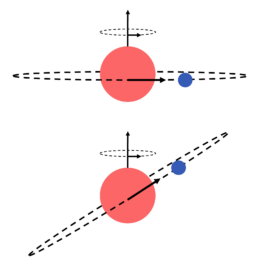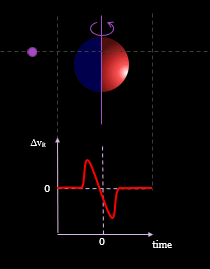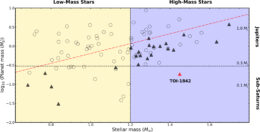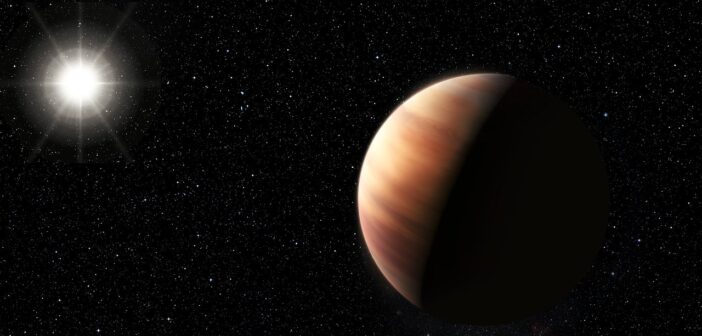Researchers have measured the alignment between a sub-Saturn-mass exoplanet and its massive host star for the first time. This measurement, which shows that the planet is misaligned relative to its host star’s spin, prompted a new theory for how misalignment arises in planetary systems.
Stellar Spin vs. Planetary Orbit

Star–planet systems demonstrating spin–orbit alignment (top) and spin–orbit misalignment (bottom). [Kerry Hensley]
This trend in spin–orbit misalignment hints at how these planetary systems formed and evolved. Previously, researchers suggested that hot Jupiters around small, cool stars tend to be aligned because tidal forces acting on the star’s atmosphere cause it to reorient its spin to align with the orbit of the planet. Larger, hotter stars are less susceptible to this effect, making misaligned hot Jupiters in these systems more common. This seems to tidily explain what’s going on for massive planets, but what about smaller planets?

An animation of the Rossiter–McLaughlin effect. [Wikipedia user Amitchell125; CC BY-SA 4.0]
Into a New Domain
In a recent research article, a team led by Kyle Hixenbaugh (Indiana University) measured the spin–orbit misalignment between TOI-1842, a 1.45-solar-mass star, and its planet that is slightly less massive than Saturn. This is the first time this measurement has been made for a sub-Saturn-mass planet around a high-mass star (here, high mass means more than 1.2 solar masses).
To determine TOI-1842’s spin, the team observed the slight change in the star’s apparent radial velocity as the planet passed in front of the oncoming and receding sides of the star, known as the Rossiter–McLaughlin effect. Using models to simulate the star’s light curves and radial velocity measurements, the team found that the planet is considerably misaligned from its star.
Making Sense of Misalignment
Based on this measurement, Hixenbaugh and collaborators proposed a new framework to explain the observed trends in spin–orbit misalignment. Instead of tidal dissipation being the driving force, the team proposed that the number of planets in the system plays a defining role. Because the mass of a protoplanetary disk increases with the mass of the star, low-mass stars are likely only able to form a single Jupiter-mass planet, while higher-mass stars have enough material to create multiple Jupiter-mass planets. A single planet around a low-mass star thus forms in a calm environment and is likely to remain aligned to its star, while a planet with multiple Jupiter-mass siblings is knocked off kilter by gravitational interactions.

Planetary mass versus stellar mass for systems for which the spin–orbit angle has been measured. Aligned systems are plotted as open circles and misaligned systems are plotted as filled triangles. Click to enlarge. [Hixenbaugh et al. 2023]
Citation
“The Spin–Orbit Misalignment of TOI-1842b: The First Measurement of the Rossiter–McLaughlin Effect for a Warm Sub-Saturn around a Massive Star,” Kyle Hixenbaugh et al 2023 ApJL 949 L35. doi:10.3847/2041-8213/acd6f5
